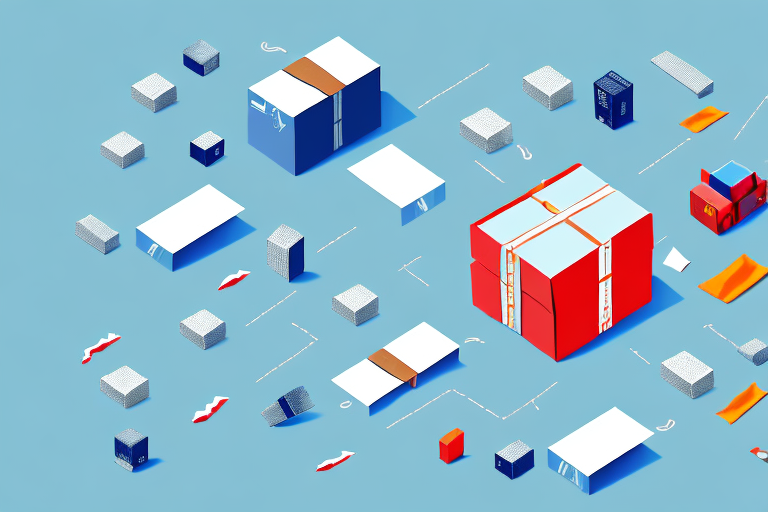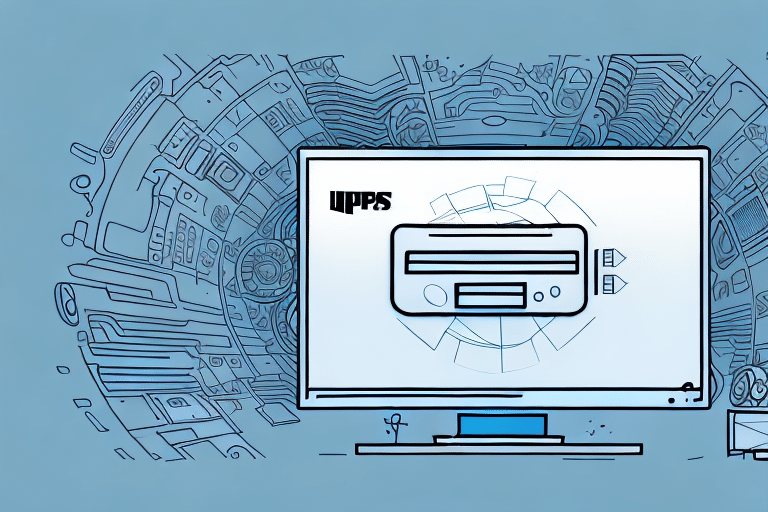Controlling Damaged Goods in the Supply Chain
A critical aspect of supply chain management is ensuring that goods move from the manufacturer to the consumer in the best possible condition. Unfortunately, it is not uncommon for products to sustain damages while in transit, leading to loss of revenue, dissatisfied customers, and reputational damage. This article explores the various causes of damaged goods in the supply chain and offers best practices for controlling such damages.
The Cost of Damaged Goods in the Supply Chain
When goods in the supply chain get damaged, it leads to significant financial losses. According to research conducted by Supply Chain Digest, transportation-related damages alone cost businesses around $0.60 for every $1,000 of goods transported. While this may seem minimal, it can accumulate substantially over time, resulting in lost revenue. The cost of damages also encompasses expenses related to handling, storage, and transportation of replacement goods, as well as customer returns and refunds. Additionally, damages can negatively impact brand perception and customer loyalty.
One of the primary causes of damaged goods in the supply chain is poor packaging. Inadequate packaging increases the likelihood of products sustaining damage during transportation or storage. This issue can be mitigated by using appropriate packaging materials and ensuring that goods are packed securely. Moreover, implementing proper handling and storage procedures can further prevent damages.
Another factor contributing to the cost of damaged goods is the time required to replace them. If a product is out of stock due to damages, it can lead to lost sales and revenue, especially for businesses that rely on just-in-time inventory management. Therefore, having a contingency plan to swiftly replace damaged goods is essential to minimize the impact on the supply chain.
Causes of Damaged Goods in the Supply Chain
Several factors can lead to goods being damaged in the supply chain, including:
- Inadequate Packaging: When goods are not packaged to withstand the rigors of the transport system.
- Improper Handling: Caused by insufficient training, reckless behavior, or unfavorable road conditions.
- Incorrect Labeling: Leads to goods being mishandled or stored under inappropriate conditions.
- Inadequate Temperature Control: Especially critical for perishable items that require specific temperature ranges.
- Transportation Accidents: Result from factors like poor road conditions or vehicle malfunctions.
Another significant cause is poor quality control. Without thorough inspections before shipping, defects or damages may go unnoticed, leading to further damage during transportation. Additionally, delays in the supply chain can expose goods to unfavorable conditions such as extreme temperatures or humidity, resulting in damage.
To prevent damaged goods, it is crucial to implement proper quality control measures, including comprehensive inspections of goods before shipment, appropriate packaging and labeling, and ensuring all personnel are trained in safe handling practices. These steps help minimize the risk of damage and ensure products arrive in optimal condition.
Impact of Damaged Goods on Business Performance
The repercussions of damaged goods extend beyond immediate financial losses. They can severely damage a brand's reputation, lead to customer dissatisfaction, and result in long-term revenue loss. Customers who receive damaged goods are likely to leave negative reviews on social media and other platforms, tarnishing the brand's image. Furthermore, companies that frequently experience damages may face higher insurance premiums and lose business opportunities with supply chain partners who prioritize robust supply chain management.
Damaged goods also increase operational costs. Replacing or repairing damaged items is both time-consuming and expensive. In some cases, companies may need to halt production or delay shipments until replacements are secured, leading to lost productivity and revenue. Additionally, investing in enhanced packaging or transportation measures to prevent future damages can further escalate costs.
Best Practices for Controlling Damaged Goods in the Supply Chain
To minimize damages in the supply chain, businesses can adopt several best practices:
- Robust Packaging: Invest in packaging that can withstand transportation stresses. Consider using shock-absorbing materials for fragile items.
- Correct Labeling: Ensure goods are labeled accurately to maintain proper storage and handling conditions.
- Personnel Training: Train employees on proper handling techniques to prevent damage during transit and storage.
- Quality Control Procedures: Implement regular inspections before shipment to identify and address defects or damages.
- Effective Communication Systems: Utilize reliable tracking systems to monitor goods throughout the supply chain and maintain clear communication among all parties involved.
By adopting these practices, businesses can significantly reduce the incidence of damaged goods, safeguarding both their revenue and reputation.
How to Identify and Evaluate Damage in the Supply Chain
Effective monitoring and inspection are essential for identifying and evaluating damage within the supply chain. Companies can utilize:
- Checklists: Standardized checklists ensure consistent inspection of goods at various stages of the supply chain.
- Digital Technologies: Tools like RFID and barcode systems help track goods and detect issues in real-time.
- Logistics Provider Updates: Regular updates on the location and status of goods in transit aid in early identification of potential problems.
Conducting a thorough evaluation of any damages incurred is also critical to determine their cause and extent accurately. Understanding contract terms and conditions with suppliers and logistics providers clarifies each party's responsibilities in case of damage or loss, helping to avoid disputes and ensure appropriate compensation.
Maintaining regular communication with supply chain partners fosters strong relationships and ensures coordinated efforts to handle damaged goods effectively.
Mitigating Risks of Damaged Goods during Transportation and Storage
Companies can mitigate the risks associated with damaged goods by focusing on transportation and storage conditions:
- Temperature Control: Establish clear guidelines to protect goods requiring specific temperature ranges, using technology to monitor conditions in real-time.
- Secure Storage Facilities: Utilize warehouses that are clean, secure, and equipped with high-quality storage solutions.
- Appropriate Packaging Materials: Use sturdy materials that protect goods from moisture, dust, and other environmental factors.
- Employee Training: Educate employees on proper handling procedures to minimize damage during transportation and storage.
By addressing these areas, companies can significantly reduce the risk of damaging goods during the supply chain process.
Implementing Quality Control Strategies to Prevent Damages in the Supply Chain
Implementing comprehensive quality control strategies is vital for preventing damages in the supply chain:
- Pre-Shipment Inspections: Conduct thorough inspections before shipping to identify and rectify any defects.
- Spot-Checking During Transport: Regular checks during transit can catch issues early before they escalate.
- Post-Shipment Evaluations: Assess the condition of goods upon arrival to identify any damage that occurred during transit.
- Training Personnel: Ensure all individuals involved are trained in proper handling techniques to prevent damage.
These strategies help maintain high standards of product quality and minimize the occurrence of damaged goods.
Using Technology to Monitor and Manage Damaged Goods in the Supply Chain
Technology plays a crucial role in monitoring and managing damaged goods within the supply chain. Solutions such as:
- IoT Sensors: Provide real-time data on the location, temperature, and condition of goods in transit.
- RFID Tracking: Enhances visibility of goods throughout the supply chain, enabling timely interventions.
- Machine Learning: Identifies patterns that may indicate potential issues, facilitating proactive decision-making.
By leveraging these technologies, companies can improve their ability to prevent and respond to damages effectively.
Building Collaborative Relationships with Suppliers and Logistics Providers to Minimize Damages
Establishing collaborative relationships with supply chain partners is essential for minimizing damages. Companies should:
- Foster Communication: Maintain open and transparent communication channels with suppliers and logistics providers.
- Understand Goods: Work closely with partners to gain a comprehensive understanding of the goods being transported, ensuring appropriate packaging and handling.
- Proactive Issue Identification: Collaborate to identify and address potential issues before they result in damages.
These collaborative efforts enhance the overall resilience and efficiency of the supply chain, reducing the likelihood of damaged goods.
The Role of Training and Education in Preventing Damaged Goods in the Supply Chain
Training and education are pivotal in preventing damaged goods. Companies should:
- Invest in Training: Ensure that all personnel involved in the supply chain are knowledgeable about damage prevention techniques.
- Provide Regular Education: Keep employees informed about regulatory changes and best practices in the industry.
- Offer Continuous Learning Opportunities: Encourage ongoing education to keep personnel up-to-date with the latest technologies and strategies for damage prevention.
By prioritizing training and education, businesses can enhance their workforce's ability to handle goods safely and effectively, thereby reducing the incidence of damages.
Case Studies: Successful Strategies for Controlling Damaged Goods in the Supply Chain
Several businesses have successfully implemented strategies to control damages in their supply chains:
- General Electric: Implemented a robust quality control program requiring suppliers to adhere to specific packaging guidelines. This initiative reduced shipping damages by 47% and saved the company over $100 million.
- Walmart: Adopted a technology-based vendor management inventory system that uses real-time updates to optimize inventory levels and transaction visibility. This system reduced damages and improved overall supply chain efficiency.
These case studies demonstrate the effectiveness of strategic quality control and technological integration in minimizing damaged goods.
Future Trends and Innovations in Managing Damages in the Supply Chain
The future of supply chain management is increasingly reliant on technological innovations. Emerging technologies include:
- Blockchain: Provides secure and transparent data storage, enhancing the tracking and monitoring of sensitive products like pharmaceuticals, thereby reducing fraud and counterfeiting.
- Autonomous Delivery Vehicles and Drones: Improve transportation efficiency and reduce the likelihood of human error, decreasing the chances of damages.
- Smart Packaging Materials: Can monitor and report on goods' conditions in real-time, allowing for immediate responses to potential issues.
Adopting these innovations can significantly enhance damage prevention and management within the supply chain.
Reducing Costs through Effective Management of Damaged Goods
Effective management of damaged goods can lead to substantial cost reductions for businesses. Strategies include:
- Investing in Appropriate Packaging: Prevents damages and reduces the need for replacements.
- Training Personnel: Enhances handling practices, minimizing the risk of damage.
- Utilizing Digital Technologies: Enables real-time monitoring and proactive issue resolution.
- Implementing Quality Control Strategies: Ensures high product standards and early defect detection.
- Fostering Collaborative Relationships: Encourages joint efforts in damage prevention and efficient problem-solving.
By implementing these measures, businesses can lower costs associated with customer returns and refunds, increased insurance premiums, and lost revenue due to reputational damage.








